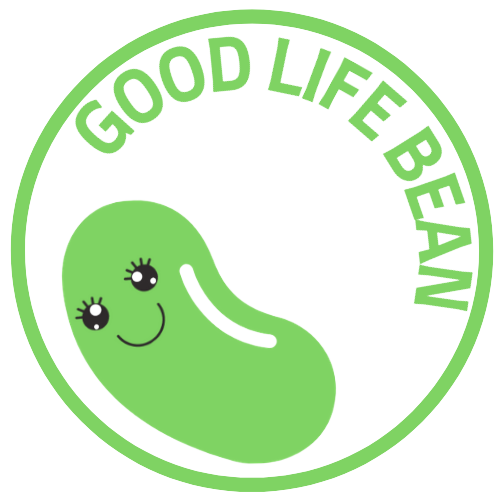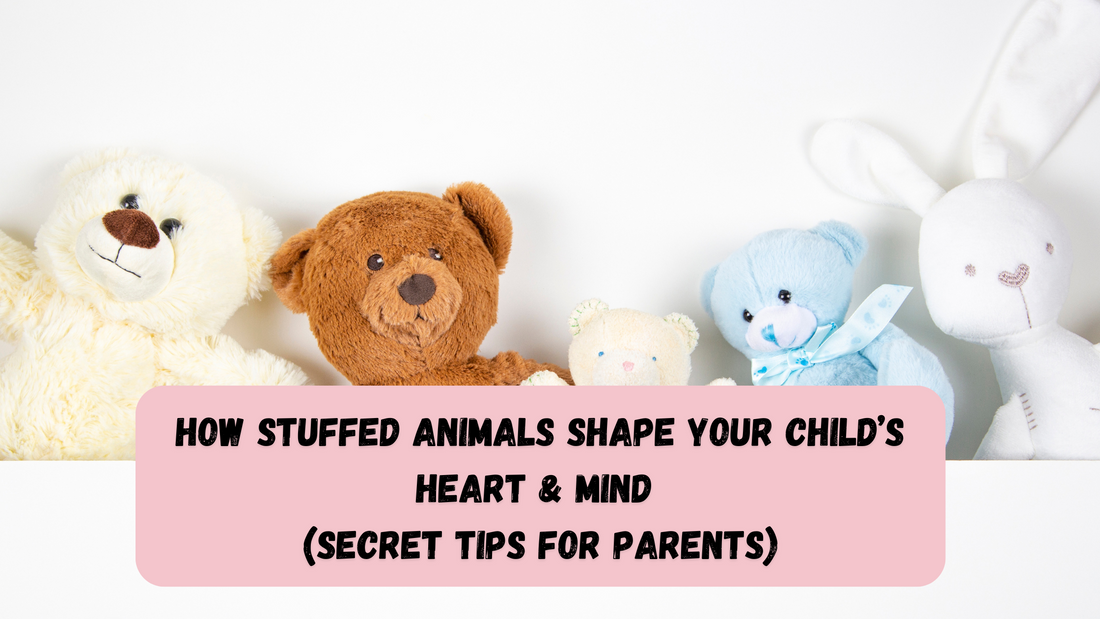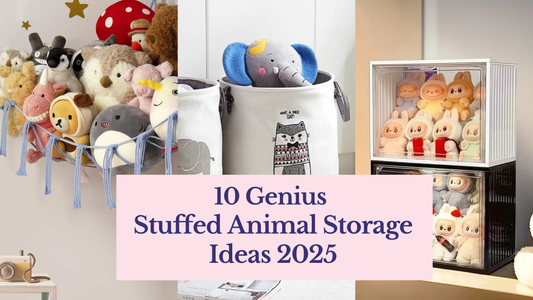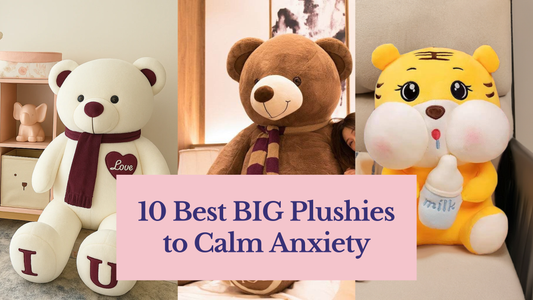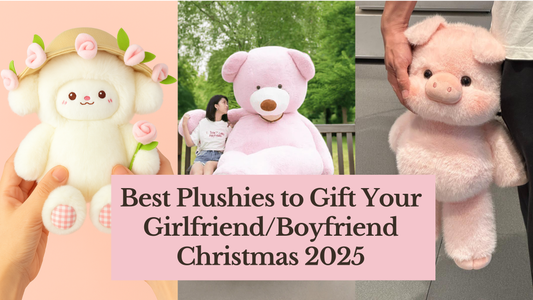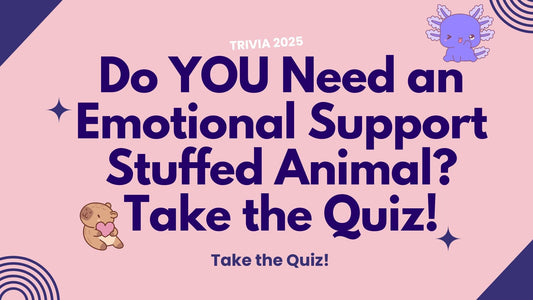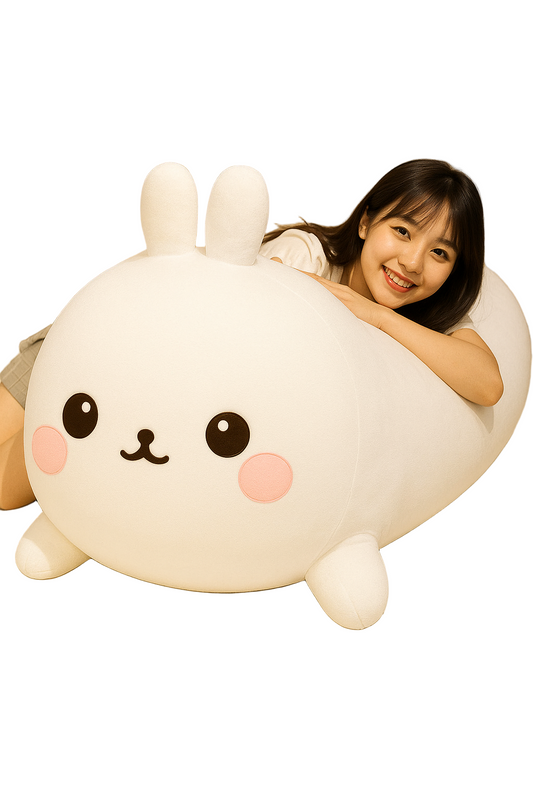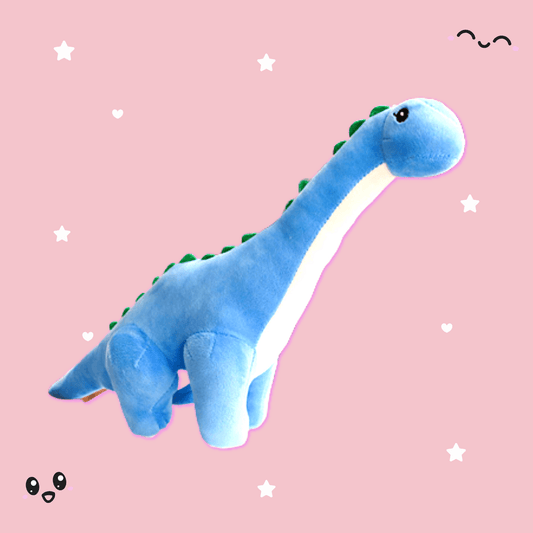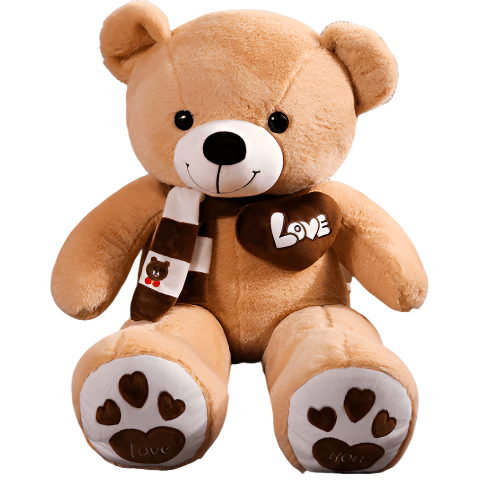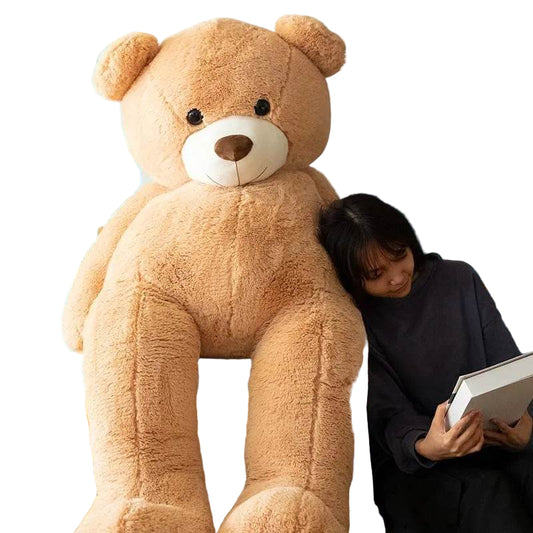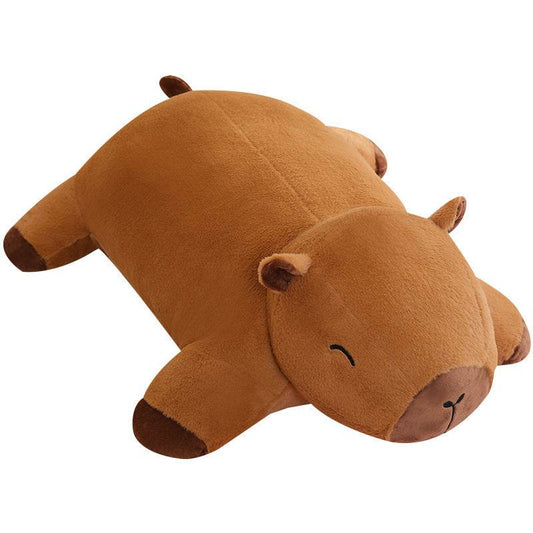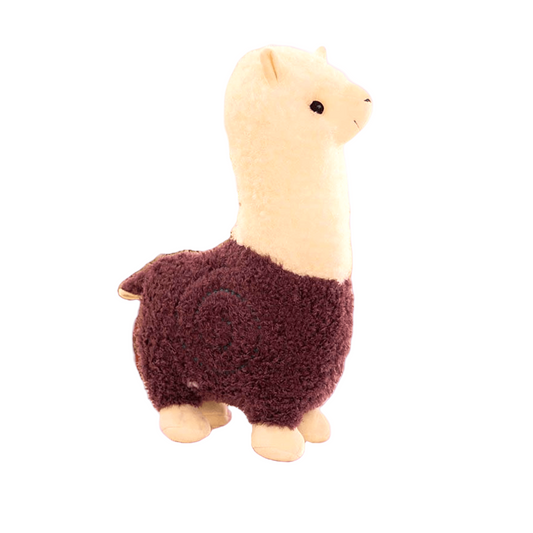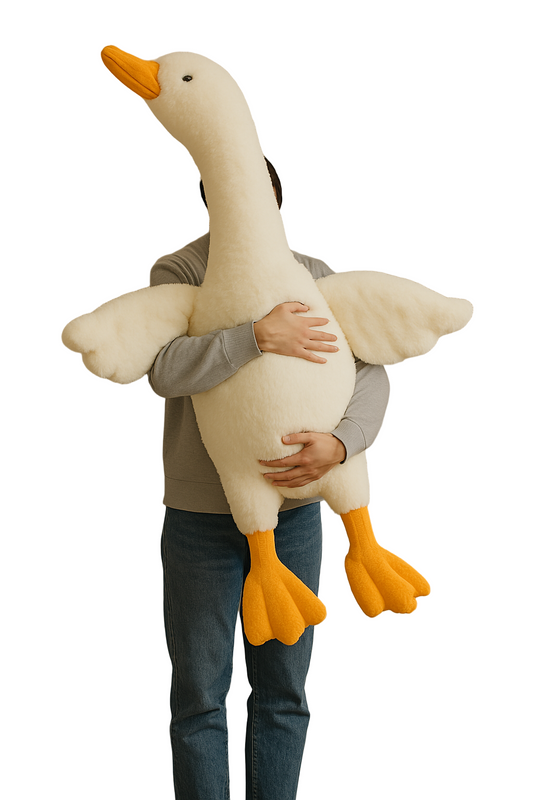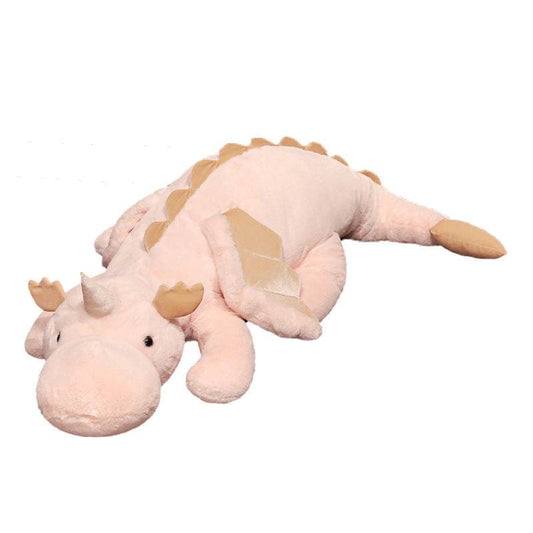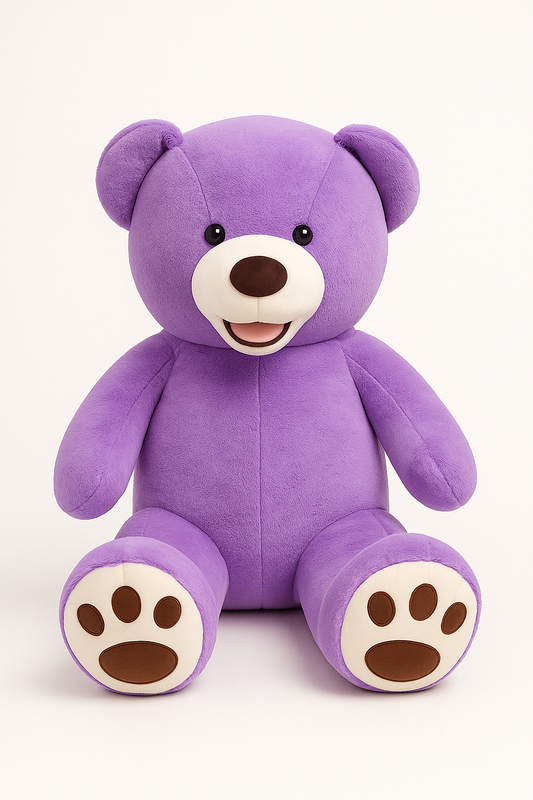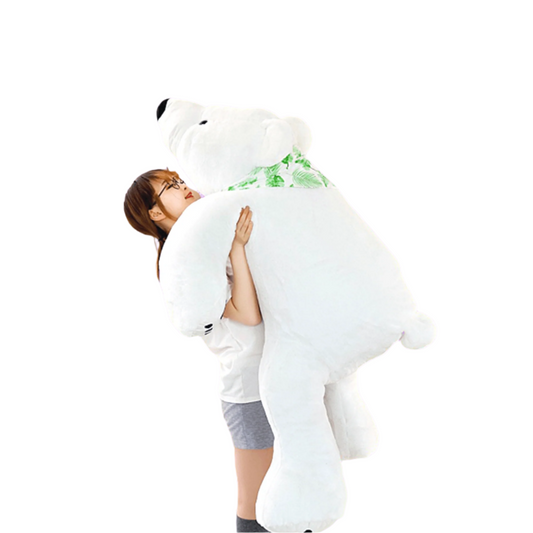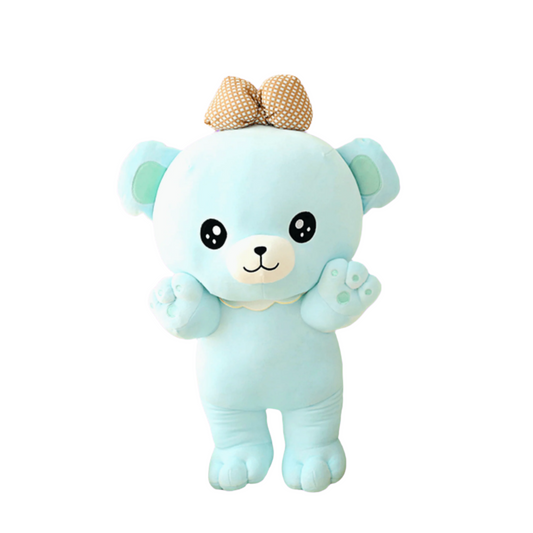Talking Points
- How plushies activate “feel-good” brain chemistry
- Why attachment to a single favorite toy is developmentally normal
- The role of stuffed animals in stress-relief and separation comfort
- How plushies encourage imaginative play and social learning
- Nostalgia: why parents often keep their own childhood teddy
When five-year-old Anna started preschool, her parents expected tears at drop-off. They didn’t expect that a fraying, cottony lamb—“Mr. Wool”—would become the hero of those early mornings.
Every day, Anna tucked Mr. Wool into her backpack. She’d squeeze his floppy ear before walking into class. By the time her mom picked her up, the lamb smelled faintly of crayons and courage.
Anna's story isn’t rare. It’s backed by science.
When a child hugs a beloved plushie, touch receptors send a cascade of signals that release oxytocin, the same bonding hormone that helps parents and newborns connect. Oxytocin dials down cortisol, the stress hormone, which explains why a simple squeeze can slow a racing heart or ease bedtime jitters. So to answer
Do stuffed animals really release “feel-good” chemicals?
Yes—and science can prove it. When your child hugs their plushie, the soft tactile sensation sends signals to the brain to release oxytocin, the same hormone behind bonding between parents and newborns. Oxytocin lowers cortisol (the stress hormone), slows heart rate, and tells the nervous system: you’re safe.
Parent Tip: Bedtime hugs with a beloved teddy can help lower evening jitters, making bedtime routines calmer and easier.
What role do stuffed animals play in childhood development?
Psychologists call toys like Mr. Wooliam “transitional objects.” They’re not just cute—they’re tools. A child who clutches a teddy when Mom or Dad isn’t around is practicing emotional self-regulation.
Instead of needing constant reassurance, they learn, I can comfort myself. That’s independence wrapped in fleece.
- Emotional resilience: Kids learn to soothe themselves without immediate adult intervention.
- Social practice: Talking to a plushie is an early form of role-play that builds empathy and communication skills.
Why do children form strong attachments to specific stuffed animals?
Why One Plushie Wins Their Heart
You might wonder why your kid chooses that one scruffy bunny over the new, shiny stuffed fox. It’s all about familiarity and shared history.
That toy smells like home. It’s been on every car ride, soaked with tears, kissed goodnight a thousand times. In a world that keeps changing, it stays exactly the same—and that’s priceless.
It’s not random—it’s about familiarity and consistency. That one beloved bunny or bear becomes a reliable source of comfort when the rest of the world feels unpredictable.
Real-life snapshot: A worn-out lamb that’s survived countless washes may hold more power than a brand-new toy, because it smells like home and carries a shared history of every bedtime story and road trip.
How do stuffed animals help children cope with separation or stress?
Plushies as Stress Shields
Big changes—a move, a hospital stay, the first sleepover—can rattle even confident kids. A plushie acts like a portable piece of home.
Many parents spritz a hint of their own perfume or aftershave on the toy so it carries the scent of comfort. One mom shared how her son, away at camp, would press his nose to his bear’s shirt every night and whisper, “Smells like Dad.”
That little ritual tells the brain: I’m safe. I’m loved. I can handle this.
Whether it’s the first day of preschool or a sleepover at Grandma’s, separation anxiety is real. A plushie works like a portable piece of home. Kids often hug or sniff their toy when they miss mom or dad—an act that soothes the amygdala (the brain’s fear center).
Pro-Tip for Parents: Spritz a tiny bit of your own familiar perfume or cologne onto the plushie. That scent cue can bring instant reassurance during long days apart.
Can stuffed animals improve play and imagination in children?
Absolutely. A plushie isn’t just a cuddle buddy—it’s a co-star in endless adventures. Pretend tea parties, jungle safaris, and space missions with stuffed animals encourage:
- Narrative skills (telling stories)
- Problem-solving (“How do we escape the lava floor?”)
- Emotional exploration (acting out feelings through characters)
This kind of imaginative play has been linked to stronger creativity and even better language development.
Why do stuffed animals invoke nostalgia and positive memories?
Fast-forward a decade: that beloved bear in a keepsake box still holds emotional weight. The smell of its fur, the worn texture—these are powerful memory triggers that can spark joy and comfort in adulthood.
Parents often find themselves saving their child’s favorite plushie not just for sentimental reasons, but because it’s a tangible symbol of love and security.
Quick Parent Pro-Tips
- Lavender calm: Dab a drop of lavender oil on a plushie’s back (out of reach of the child’s mouth) to create a soothing bedtime scent.
- Travel buddy: Pack their favorite plushie in a carry-on bag for long trips; it reduces travel anxiety.
- Memory maker: Snap photos of your child’s plushie at big milestones (first day of school, birthdays) to create a heartwarming keepsake album.
Stuffed animals are more than “just toys.” They’re tiny teachers of emotional resilience, empathy, and imagination. Next time you watch your child hug that well-loved bear, remember: you’re witnessing the science of comfort at work—one cuddle at a time.
Must-Reads While You’re Here
- Can Stuffed Animals Help Reduce Stress, Anxiety or Loneliness?
- How to Wash, Clean & Store Your Plushies
- Best Giant Plushies for Adults Who Need Serious Comfort
TL;DR
- Cuddling a stuffed animal triggers oxytocin, the “cuddle hormone,” which lowers stress and builds feelings of safety.
- Plushies become transitional objects, helping kids cope with separation, new schools, or stressful life changes.
- A favorite stuffed animal fuels imagination and creative play, a key driver of problem-solving skills.
- Childhood plushie bonds turn into nostalgic comfort that lasts well into adulthood.
The Takeaway
A stuffed animal isn’t just a toy—it’s a companion that helps your child’s brain and heart grow. From the quiet power of oxytocin to the lifelong nostalgia it creates, every cuddle is a small act of emotional building.
So when you see your child clutching that beloved lamb or bear, don’t rush the moment. That hug is science, memory, and magic—all stitched into one soft friend.
